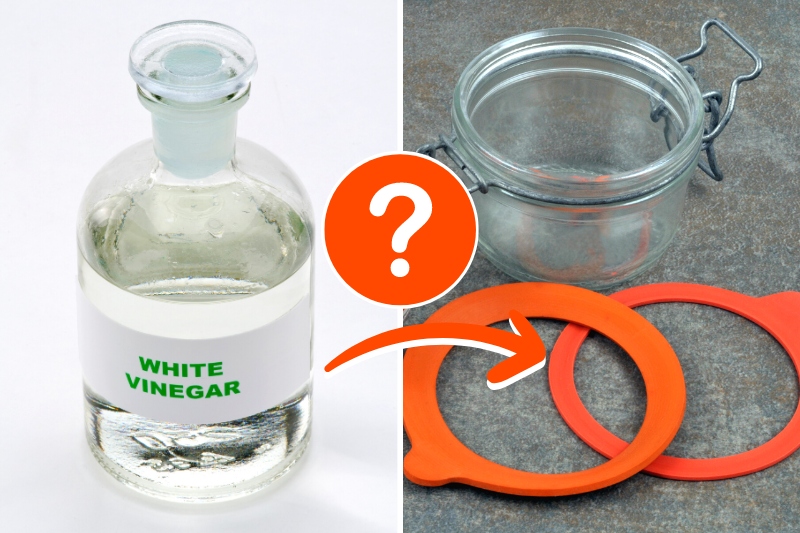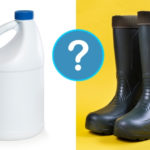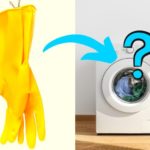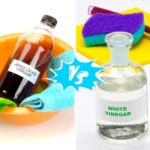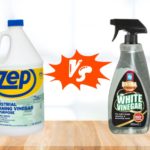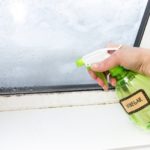You may not have given it much thought, but there is rubber in a lot of our household appliances.
Rubber makes for a great seal. As such, it’s used in small appliances such as blenders and coffee makers and large appliances such as washing machines and fridges.
One thing you probably have noticed is that rubber seals can get grimy. Water and gunk get trapped in them and can lead to mould building up.
Since vinegar is a great all-purpose cleaner and anti-bacterial, it may be tempting to use it to clean your rubber seals.
However, some people claim that vinegar destroys rubber. Is this just an old wives’ tale? In this article, we investigate whether it’s safe to use vinegar to clean rubber.
Can Vinegar Destroy Rubber Seals?
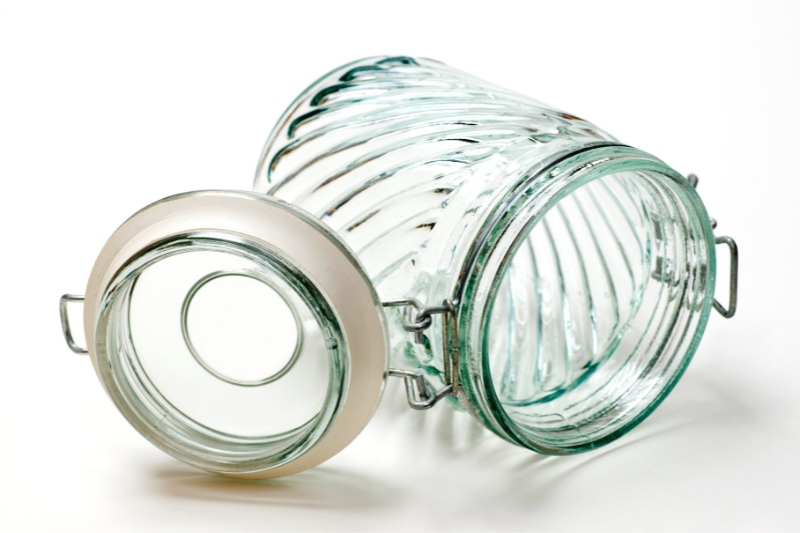
Vinegar is widely used as a fabric softener or even a washing machine cleaner, so is it damaging the rubber seal on the door?
The acidic composition of vinegar means that it can eat away at natural materials such as rubber and stone over time.
More specifically, full-strength vinegar should be avoided on the following types of rubber: polyacrylate, fluorosilicone, and Buna-N.
However, vinegar will only destroy the rubber if it’s left on the surface for a long time. Rinsing the vinegar off will lessen the damaging effects.
Furthermore, if you use vinegar in your washing machine, the water in the washing machine cycle will dilute it so much that it’s unlikely to cause any damage.
To be completely safe, you can check the manual of your appliances to see whether they specifically advise against using vinegar.
If you’re unsure, or you no longer have the manual, be sure to rinse off any vinegar that comes into contact with your rubber items or avoid it all together.
It’s better to be safe than sorry and you don’t want vinegar to corrode the seal, or hose, in your washing machine as this could cause a leak.
What Can You Use to Clean Rubber Instead of Vinegar?
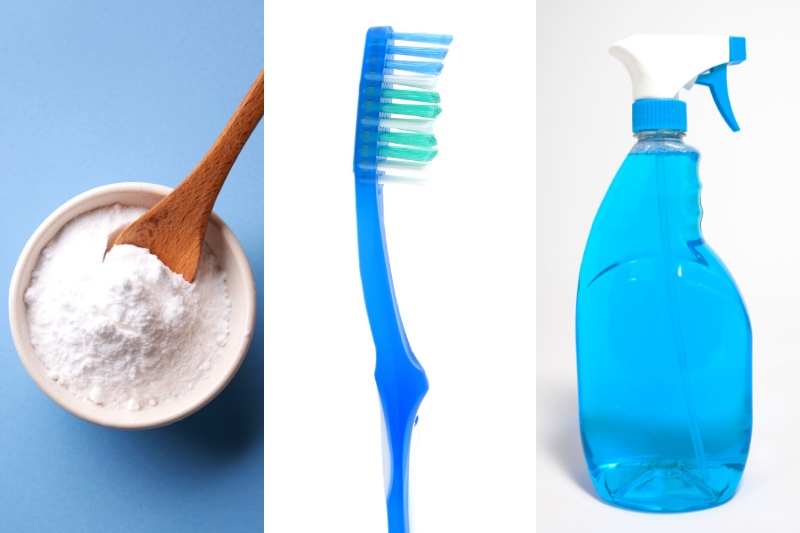
- Soap: Use a gentle soap and a soft cloth to clean rubber seals.
- Bicarbonate of soda (baking soda): Mix bicarbonate of soda with washing up liquid and water to tackle stubborn stains.
- Toothbrush: Wherever you can remove a rubber seal, use a toothbrush with soap and water to get into the nooks and crannies of the appliance.
- All-purpose cleaner: Use a gentle, all-purpose cleaner that doesn’t contain any acid.
- An appliance-specific cleaner: You can buy cleaners that are made specifically for dishwashers and washing machines. You can also use fabric softener or stain remover instead of vinegar for clothing.

In The Wash is your guide to the best laundry and cleaning products, tips and tricks. Our mission is to solve the UK’s cleaning and laundry dilemmas!
